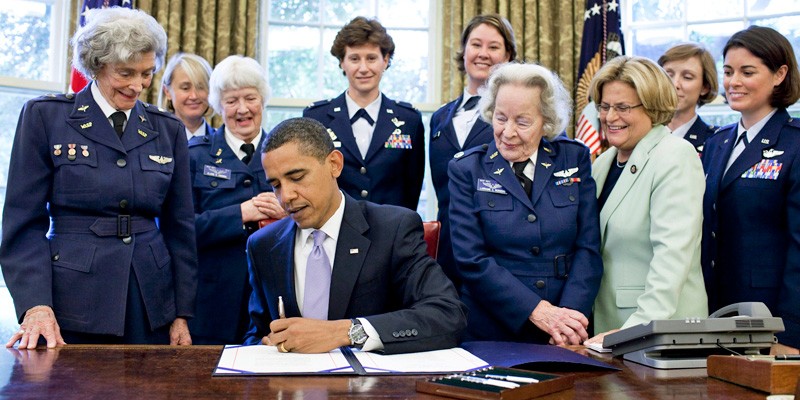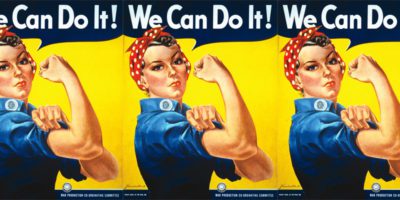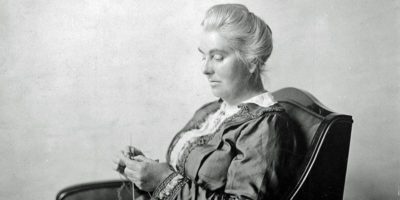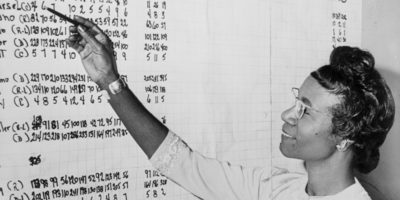Matia Karrell is the creator and director, FlyGirls, a ten-part dramatic series about the forgotten female aviators from WWII. The series, which is in development at her company, The Red Door Films, sheds light on an important chapter of history, drawing on the unpublished diaries and interviews with veterans who shared their experiences as pilots in the first group of women to fly for the US Armed Services, the Women Airforce Service Pilots (WASP). The series pays tributes to all 1,074 heroic women who served in WASP and also the British women of the Air Transport Auxiliary (ATA) who supported them.
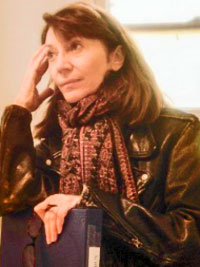
“…We can look back on those women with hindsight and a different perspective. They just knew who they were fighting and what obstacles were in their way, and they just pushed through them…”
Working as a film and TV writer, director and producer
I started out in Boston, New York, as a modern dancer. That was my field of study for many years but I began to find dance was too abstract. At the time we didn’t have the technology to include visual imagery and other elements to a dance production to assist the narrative.
I began to feel like I needed words in order to explore the idea of story. The story in the abstract sense wasn’t saying enough for me. I’m a visual person and I love the idea of light and movement, so I felt that film, along with a narrative, included all those elements which were so important to me.
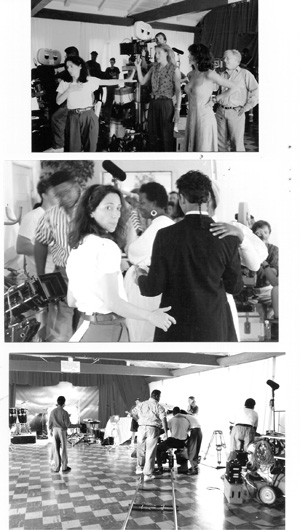
It allows me an element of control I wouldn’t otherwise have. If you have a project you’ve developed from a book or material you have optioned you want that element of creative control so you can take care of the project as best you can so it doesn’t become what I call “Hollywoodised”.
Coming up with the concept for FlyGirls following a chance discovery
My work on FlyGirls came about many years ago, when I found a picture of my mother in her WWII volunteer uniform. Boston, where I grew up, is a harbour city. She’d been one of a group of plane spotters along the East coast of America, but she’d never talked about it so I had no idea. So, I began to try and find out more about these women but there was so little information. This just made me more determined, so I kept on digging and digging.
I became fascinated by what women contributed to the military in WWII, and by what they felt they needed to contribute. I came upon the Women Airforce Service Pilots (WASP) and I realised this would be an excellent place from which to navigate this story. I started researching and I met one of the WASP veterans who became my guide (although she has sadly https://www.womanthology.co.uk/wp-adminnow passed away).
I began attending WASP events. I went to Sweetwater, Texas, where the National WASP WWII Museum is today, and where the first all-female Air Force base was located in 1942. I then started collecting memoires and books, as well as meeting as many WASP veterans as I possibly could. In between I would have to stop and go back to my regular work as a television director.
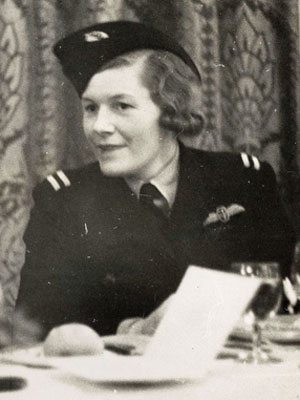
FlyGirls draws on the unpublished diaries of the American, Ann Wood-Kelly, who was among the 25 American women who came to England to serve with the women of the Air Transport Auxiliary (ATA), as well as the memoire of Pauline Gower, the British Commander of the Women’s Division of the ATA. American WASP veterans Edna Modisette Davis, Alyce Stevens Rohrer and others also shared their experiences as pilots.
Creating a dramatic series to share untold stories
It became an ongoing process. I’d produced four versions of the trailer because I wanted to make sure those who saw it realised that I wasn’t making a documentary. There are already wonderful documentaries out about these women. I wanted to make a dramatic series and I took Band of Brothers as my inspiration, so I tried to work along similar lines.
Having seen Band of Brothers and the interviews afterwards with the men the film was based on made me realise the importance, not just of an educational archive but also to help communicated the way we went about telling the story.
So, I set about filming interviews with the WASP veterans, although most of them were in their 90s – age 95 and upwards, and sadly, there are very few of them left. When I attended the Congressional Gold Medal ceremony for the WASP in Washington DC in 2010 there were around 300 women, but now there are less than 85. A lot of them who are still alive today have health issues and they can’t always recollect their memories as well as they were able to six years ago, which is terribly sad.
A shifting frame of reference
When I first started interviewing the women, I’d ask: “How was it?” And they’d say, “Oh, great. I had a wonderful time. I’m so glad I was able to contribute to the war effort.” You have the remember there were no words like ‘feminism’ and ‘chauvinistic’ in use in the way that they are today, so they didn’t have that language to think about how they were being treated at the time.
I think they also felt that they would sound like they were complaining because they were so thrilled to be given the opportunity to take part. When I first started, everyone was saying how great it was, but little by little as the years went on they began to start saying things like, “well there was the time when such and such happened,” or “there was this one particular training instructor who had it in for the women and we knew if you go to him you weren’t going to pass. You really had to be prepared.” So, slowly these stories came to light.
Some women had no problems and didn’t seem to understand what problems the other women had experienced. It’s a fascinating time in the culture of women. There was nothing like social media so they couldn’t share their experiences, so their frame of reference was very subjective.
Women living against their time: More than a sepia-toned look at history
If a young female trainee fraternised with an instructor, she’d be “washed out”. They wanted to be part of this training so badly and it meant so much to them that there was one woman who failed her solo flight so she’d had to “wash out”, and she tried to commit suicide, so there is a darker side to this.
This isn’t sepia-toned look at what they did, as if to say: “Isn’t that cute? Women flying planes!” It’s not a hard look, but it’s an honest look to show that these women were living against their time. Some of them had the support of their family, or some of them didn’t have any support, but they did it anyway.
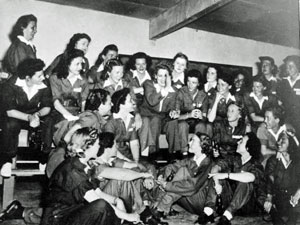
You have to remember that they weren’t paid to go to the initial interview with Jackie Cochran. Before they were accepted in they had to raise money themselves to pay for their training to get to a certain number of flying hours before they would even be considered. American women had not been allowed to fly in the military at that time other than to take part in air racing. Jackie Cochran was one of the fastest racing pilots of her time.
No Ordinary Time
There’s a wonderful book called No Ordinary Time by Doris Kearns Goodwin, and in it she talks about the fact that America was becoming a modern country, and women could feel it and they wanted to become modern. They wanted more. There was a great migration at that time in the United States, and it went from being a country of small towns to big cities.
We can look back on those women with hindsight and a different perspective. They just knew who they were fighting and what obstacles were in their way, and they just pushed through them. They told me they knew they had to be better than the men in order to be considered as good as the men. Some of the planes were sabotaged. We don’t know if they were sabotaged by disgruntled male mechanics or sometimes they thought it was perhaps German sympathisers, so there was an element of danger. 38 women lost their lives during this time.
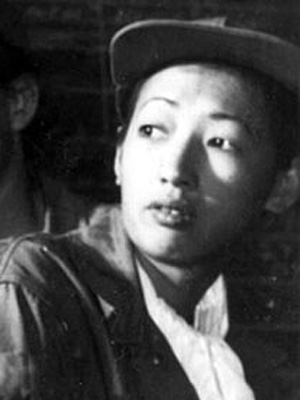
There’s a contradiction in the sense that these women weren’t paid, they weren’t given benefits. If they died there would have to be a collection to pay to send the body home, accompanied by one of the other women. Another contradiction was Hazel Ying Lee, one of two Chinese-American women who were Women Air Service Pilots. She was the last woman to die during this service in the WASP and when one of the other young women accompanied her body home the local cemetery did not want to allow her to be buried there because she was Chinese.
It’s important to know what these women have gone through, and to understand how strong and confident these women had to be. Some of them flew planes for gunnery practice, which meant that they were in the air with a piece of cloth hanging from the tail of the plane, and there were trainee gunners on the ground (men) shooting at the plane to try and hit the cloth. They were literally used as target practice with live ammunition.
Sharing vivid and detailed recollections to create three-dimensional characters
The interviews really jogged the women’s memories, so they were able to share vivid and detailed recollections as the relived the moments that they went through. These can be frightening and dark but there’s also moments of humour too.
If you were to ask these women if they were scared, years ago, they’d say: “No, I wasn’t scared!” but as you ask them now they’ll say: “Oh, was I scared!” and they’re quite prepared to admit that. I think they were living up to an ideal before and now they want to share their stories because they know it’s they’re legacy and their proud that people are interested.
They were all three-dimensional people so I wanted to honour this by creating three dimensional characters for the series. This is why we can’t just gloss over the darker things that they went through.
There was one plane which many of the men didn’t want to fly, which was known as “the widow maker”, so the women were asked to fly it as a way to embarrass and shame the men into flying it.
Jacqueline Cochran, who envisioned this all-female air force is a fascinating character, sometimes did the wrong things for the right reason. She had to push the women to do things that may jeopardise their lives, because she had to prove that they were as capable as men.
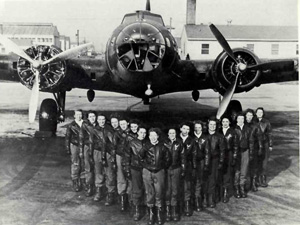
The women were given veteran status in the 1970s and they would travel around in their uniforms, giving talks because they wanted young girls to know that they can be anything they want to be. That was what they wanted to say. The images say it all. They were strong, confident, beautiful women.
Why it’s essential to keep reminding society what women have done and what they’re capable of doing
It takes time to make change and it’s essential to keep reminding society of what women have already done, and what they’re capable of doing. It’s like with the film, Hidden Figures. Who knew that there was this group of African-American women who were working for NASA? We learn our history through our stories, and these are often told through films because this is how today’s generation want to consume them. It’s vital to see that during a time when you couldn’t imagine it, they imagined it, and they did it.
At the moment, there’s a debate about whether or not women should be in combat, but some women want to be in combat. They feel it’s only right that women should share equally in the duties that men undertake.
The WASP veterans’ story teaches us all how powerful women can be in a situation you could never have imagined. Most people have never heard of these women. We met with the US Air Force last year and they were so honoured and excited that someone was finally telling these women’s stories.
Beyond the myth of “a woman’s place”
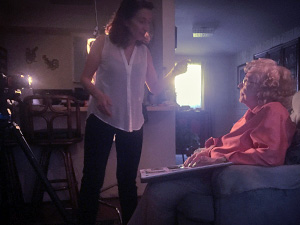
During that time in our country’s history there was a lot of myth about “a woman’s place”, a woman as “the delicate gender”, and all these phrases were used to keep women in a certain place. I want to show that in a time when nobody saw these women, they could see themselves as much more than anybody would give them credit for.
We’ve just been in Seattle filming Mary, who is 95 years old. Her daughter is a pilot and her granddaughter is a commercial airline pilot – they are a family of pilots. It’s like going into the family business. The family business only used to be your father’s business, and a lot of the time there wasn’t a place for women. I love how women are now creating family businesses of their own. It was so exciting to meet three generations of female pilots. This history makes use reconsider how we think about women.
FlyGirls isn’t just a story about a small group of white women. The core of the FlyGirls story is centred around the WASP veterans but it expands out into all the other divisions of the Air Force. There were black women who were denied entry into WASP so they went to Tuskegee to fly with the Tuskegee Airmen, or they became nurses. There was a huge contingent of African-American nurses who came across to Europe. The images of these women are strong and powerful too.
You have to remember that until recently we’d only ever seen pictures of groups on men, in Congress, at the G7, at the United Nations, but thankfully, despite some recent setbacks, this is starting to change. Sport only used to focus on men, but now women are coming to the fore it’s just inspiring. It gives all the other women something to identify with.
What is coming up next for you and Fly Girls?
The FlyGirls project is currently with an A-list production company. We’re very excited about that. I’ve created a package and I’ve reached out to prominent female screenwriting talent so we can be as strong as possible before approaching the television networks. I’m also in contact with a well-known female producer, who I believe can help take us to the next level. We’ve had a wonderful response and I can’t wait to share the next stage in this adventure with you. Look out for our social media updates to say informed of our progress.
http://www.flygirlstheseries.com/
https://twitter.com/FlyGirlsSeries
https://www.facebook.com/Flygirlstheseries
Main image credit: Official White House photo by Pete Souza
Pauline Gower image credit: By Women’s Engineering Society (Women’s Engineering Society Archives) [CC BY-SA 4.0 (http://creativecommons.org/licenses/by-sa/4.0)], via Wikimedia Commons
Jackie Cochran image credit: By USAF (http://afhra.maxwell.af.mil/) [Public domain], via Wikimedia Commons
Hazel Ying Lee image credit: By Not given (Photo Courtesy National Archives) [Public domain], via Wikimedia Commons

